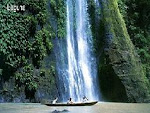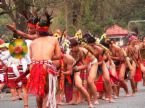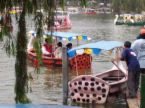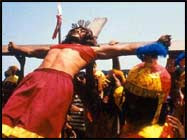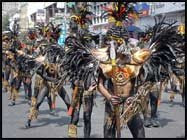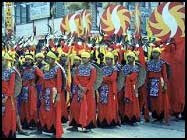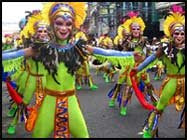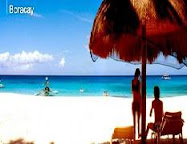 The Tourist capital of the Philippines also known as the "City of Pines" or the "Summer Capital" Baguio City is known for its cool crisp climate in relation to other cities in the Philippines, you can
The Tourist capital of the Philippines also known as the "City of Pines" or the "Summer Capital" Baguio City is known for its cool crisp climate in relation to other cities in the Philippines, you can  expect the tempter to be on average 8-10 degrees lower then in the lowlands, Baguio is approx. 1400 - 1500 meters above see level and is located in Northern Luzon about 250 kames. from Manila. How to get to Baguio, there are a number of ways to get to Baguio from Manila, by land you can take the bus either Philippine Rabbit or Victory liner. There are 3 Hi-ways that can be taken, Marcos Hwy. Kennon Rd. also known as "Zig-zag rd" for it's numerous bends and turns and there is Naguillian rd. each route is about equal give or take an hour depending on the weather and traffic conditions. Travel time is about 6 hours from Manila.
expect the tempter to be on average 8-10 degrees lower then in the lowlands, Baguio is approx. 1400 - 1500 meters above see level and is located in Northern Luzon about 250 kames. from Manila. How to get to Baguio, there are a number of ways to get to Baguio from Manila, by land you can take the bus either Philippine Rabbit or Victory liner. There are 3 Hi-ways that can be taken, Marcos Hwy. Kennon Rd. also known as "Zig-zag rd" for it's numerous bends and turns and there is Naguillian rd. each route is about equal give or take an hour depending on the weather and traffic conditions. Travel time is about 6 hours from Manila.Traveling by air with Asian Spirits, there are one or two flights a day to Baguio from Manila the
 cost is under a hundred dollars and takes approx. 55 min. take note that the Baguio airport (Loakan airport) closes due to dense fog certain times of the year, it would be a good idea to call ahead to make sure there are flights available.
cost is under a hundred dollars and takes approx. 55 min. take note that the Baguio airport (Loakan airport) closes due to dense fog certain times of the year, it would be a good idea to call ahead to make sure there are flights available.Baguio is also the jumping off point to other great locations in Northern Luzon such as the world famous Banaue Rice Terraces and Sagada Mountain Province famous for their hanging coffins.
 Once in Baguio, you will find a bustling little city, you will not find Tricycles like in the low lands, but you will see your share of Jeepneys and taxi's, getting around town is never a problem. Session rd. is the main strip it's also the main business district, you will find great little shops on either side of the road there is lower and upper session rd, to help guide you, from specialty shops, restaurants, and American franchises like McDonalds you will also see your share of street vendors selling everything from kids toys to small home appliances, water heater act. Public Market, now this is the heart of Baguio it is
Once in Baguio, you will find a bustling little city, you will not find Tricycles like in the low lands, but you will see your share of Jeepneys and taxi's, getting around town is never a problem. Session rd. is the main strip it's also the main business district, you will find great little shops on either side of the road there is lower and upper session rd, to help guide you, from specialty shops, restaurants, and American franchises like McDonalds you will also see your share of street vendors selling everything from kids toys to small home appliances, water heater act. Public Market, now this is the heart of Baguio it is  spilt into wet and dry, regardless of where you are from, there is a good chance you will find what you are looking for, not only your basic food groups are sold here but you can also find the freshest fruits and veggies, food is not the only products you can find in the public markets, you can also find clothes, shoes and just about everything under the sun including have your clothes tailored while you shop, there is an entire section dedicated to tailoring and repairs, I brought a bag to be repaired while I did my shopping and I could not believe the quality of the repair when I got back, I thought I was looking at a new bag, very professional service.
spilt into wet and dry, regardless of where you are from, there is a good chance you will find what you are looking for, not only your basic food groups are sold here but you can also find the freshest fruits and veggies, food is not the only products you can find in the public markets, you can also find clothes, shoes and just about everything under the sun including have your clothes tailored while you shop, there is an entire section dedicated to tailoring and repairs, I brought a bag to be repaired while I did my shopping and I could not believe the quality of the repair when I got back, I thought I was looking at a new bag, very professional service.SM (Shoe mart) is the newest addition to Bagnio’s sky line, it is a very modern, open air mall with literally everything under the sun, from Furniture stores, Brand name clothing, Movie house, department store, hardware store, modern Dental office, modern Americanized supermarket, Food court, coffee houses, bake shops, Barbers, Pizza hut, and other eating establishments, you can also get a great view of Baguio from one of the second and third floor outlook decks.
 What to see and do while in Baguio, Even though Baguio is only about 49 sq. Km. there is always a lot to see and places to go, some of the more popular attractions are Mines view park, Wright Park, Burnham Park, Mansion house, Botanical garden, Lion's head Park, Rizal Park, Lourdes Grotto, Camp John Hay, Baguio Catholic Cathedral, PMA (Philippine Military Academy), Bell Church, Tam-awan village, Teacher's Camp, Easter weaving room, Aguinaldo Museum, Crystal caves, Good shepherd Convent, Dominican Hill, there are also two quality golf courses one at Camp John Hay and the other Baguio Country Club they are both in close walking distance from one another.
What to see and do while in Baguio, Even though Baguio is only about 49 sq. Km. there is always a lot to see and places to go, some of the more popular attractions are Mines view park, Wright Park, Burnham Park, Mansion house, Botanical garden, Lion's head Park, Rizal Park, Lourdes Grotto, Camp John Hay, Baguio Catholic Cathedral, PMA (Philippine Military Academy), Bell Church, Tam-awan village, Teacher's Camp, Easter weaving room, Aguinaldo Museum, Crystal caves, Good shepherd Convent, Dominican Hill, there are also two quality golf courses one at Camp John Hay and the other Baguio Country Club they are both in close walking distance from one another.Horse back riding can be found at Wright Park and Baguio Country Club Village, great rates and
 guides are available. Camp John Hay also has 5 star accommodations and dinning, the Manor is Baguio's crème' de la crème' of class and style. You can also find things for the kids, like Bumper cars, bike riding, Roller skating/blading, video arcades, pool hall, play ground, picnic areas can also be found at Camp John Hay, not to mention shopping, miss some of thing you had back home? It can all be found in the shops and stores in John Hay. If night life is what you crave you can find a number of popular night clubs as well as pub style bars with live bands that are very good, there are also plenty of Karaoke bars and Pool halls. Baguio City has something for everyone, not only is it a very clean City but it's my favorite City that I call it home as it has stolen my heart with its charm and the people are just great, you can also find many foreigners both living and traveling in Baguio.
guides are available. Camp John Hay also has 5 star accommodations and dinning, the Manor is Baguio's crème' de la crème' of class and style. You can also find things for the kids, like Bumper cars, bike riding, Roller skating/blading, video arcades, pool hall, play ground, picnic areas can also be found at Camp John Hay, not to mention shopping, miss some of thing you had back home? It can all be found in the shops and stores in John Hay. If night life is what you crave you can find a number of popular night clubs as well as pub style bars with live bands that are very good, there are also plenty of Karaoke bars and Pool halls. Baguio City has something for everyone, not only is it a very clean City but it's my favorite City that I call it home as it has stolen my heart with its charm and the people are just great, you can also find many foreigners both living and traveling in Baguio. So if you are planning a trip to the Philippines, you owe it to yourself to spend a couple day's in Baguio and just let it all soak in, you be glad you did and hey who knows maybe we'll run into each other.
So if you are planning a trip to the Philippines, you owe it to yourself to spend a couple day's in Baguio and just let it all soak in, you be glad you did and hey who knows maybe we'll run into each other.














































